The tour plan for Day 2 was Ellora, Grishneshwar jyotirlinga, Bhadra Maruti Temple and Daulatabad Fort (optional). We decided to skip Daulatabad Fort as it would involve a lot of walking on the incline, and in the afternoon heat, it would never be enjoyable. So why not first thing in the morning, you may ask? Well, obviously the start to the morning should be with a temple visit, right? So, even though, it was Ellora’s marvels that we wanted to experience, it was the Lord’s blessings that we first sought.
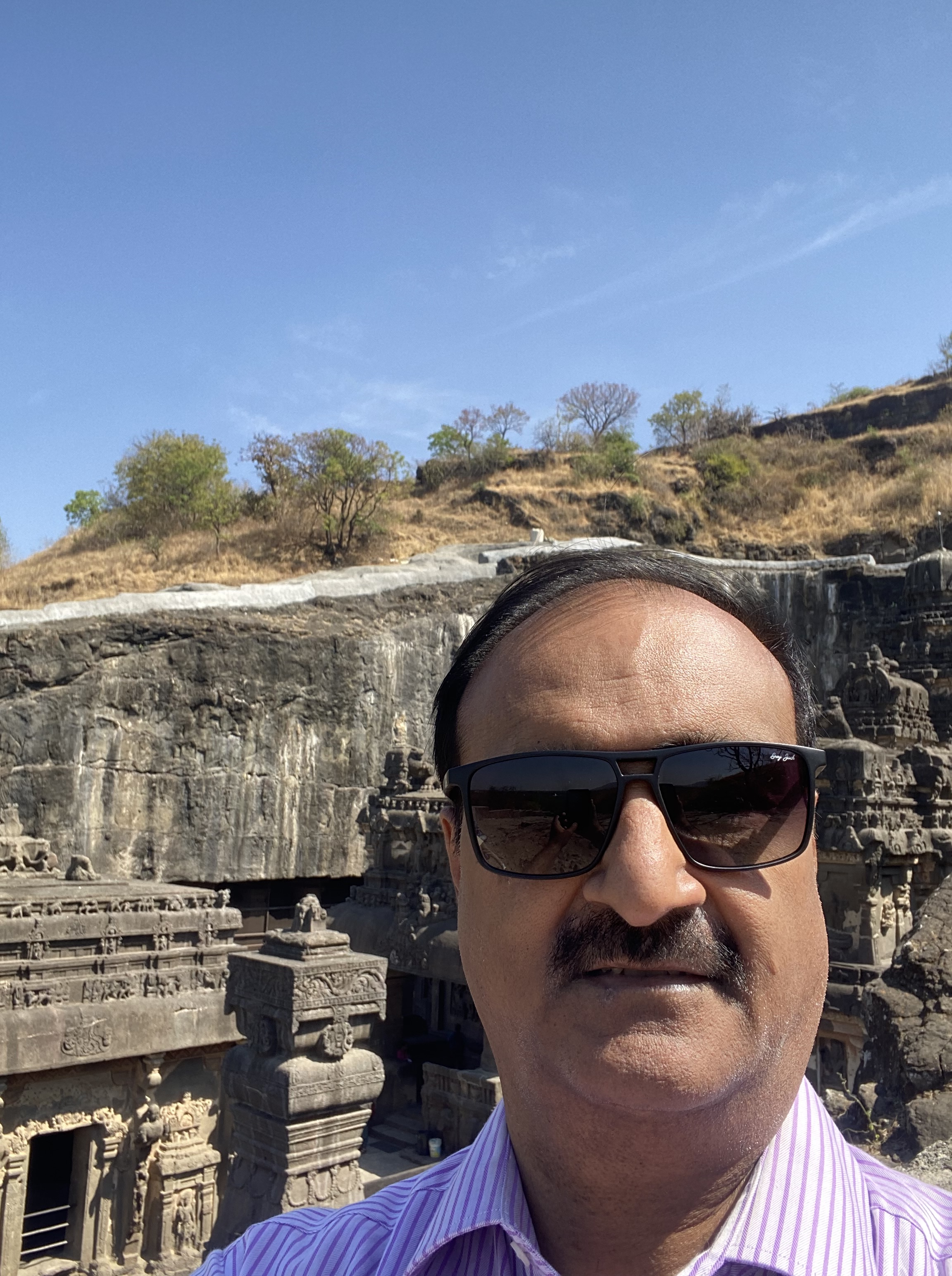
We set off at 8.30 AM and we arrived at the entrance arch to the Grishneshwar temple. It had taken less than an hour and on the way we had passed the conical hill on which the Daulatabad Fort stands. Looking up, we patted ourselves on the back for our foresight in deciding to skip the steep climb. Grishneshwar is the smallest of the twelve jyotirlingas. The approach to the temple has small shops selling puja items such as flowers and temporary railings to manage queues on festive days could be seen. Today was not one such day and hence we were able to move quickly.
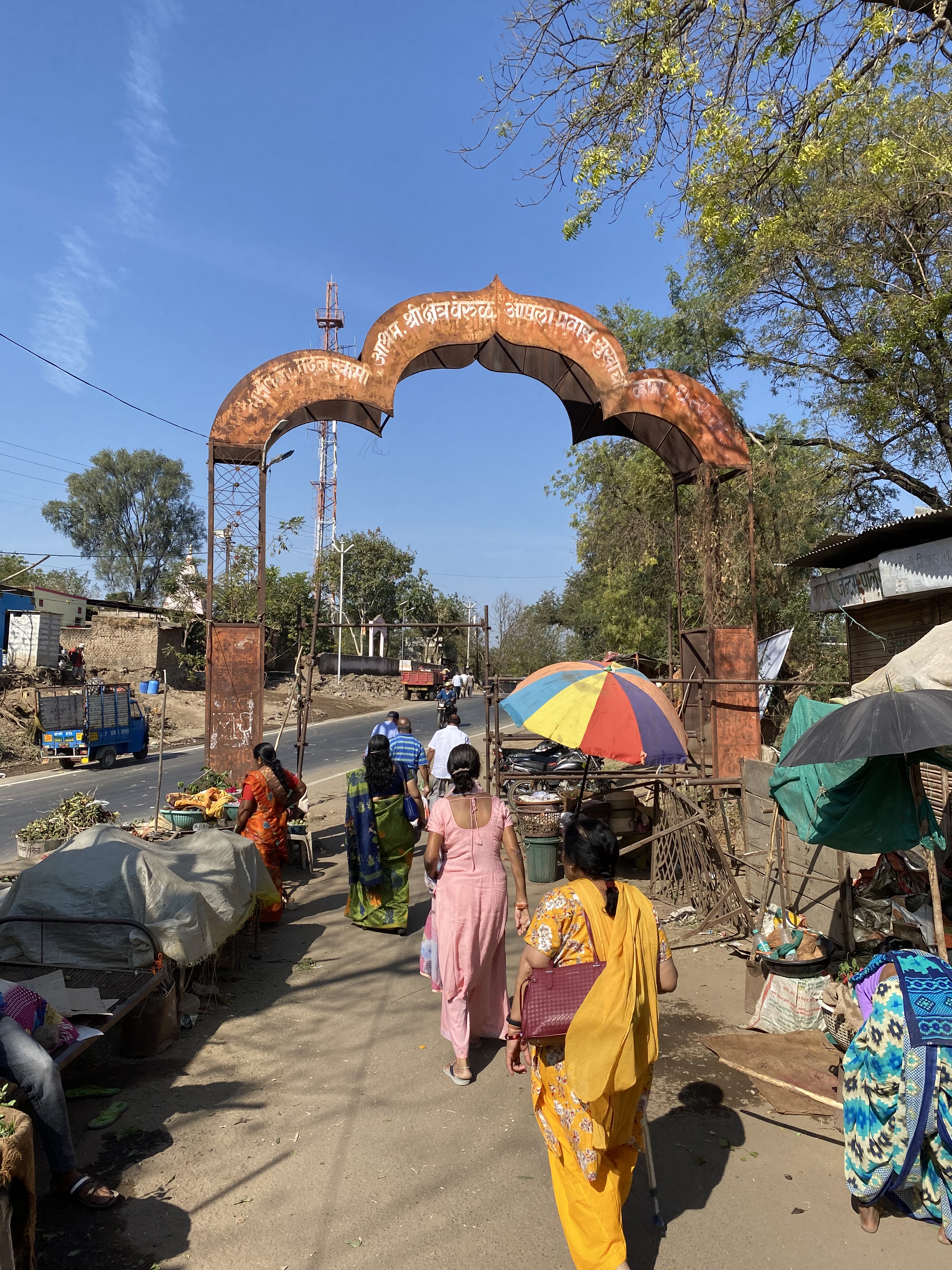
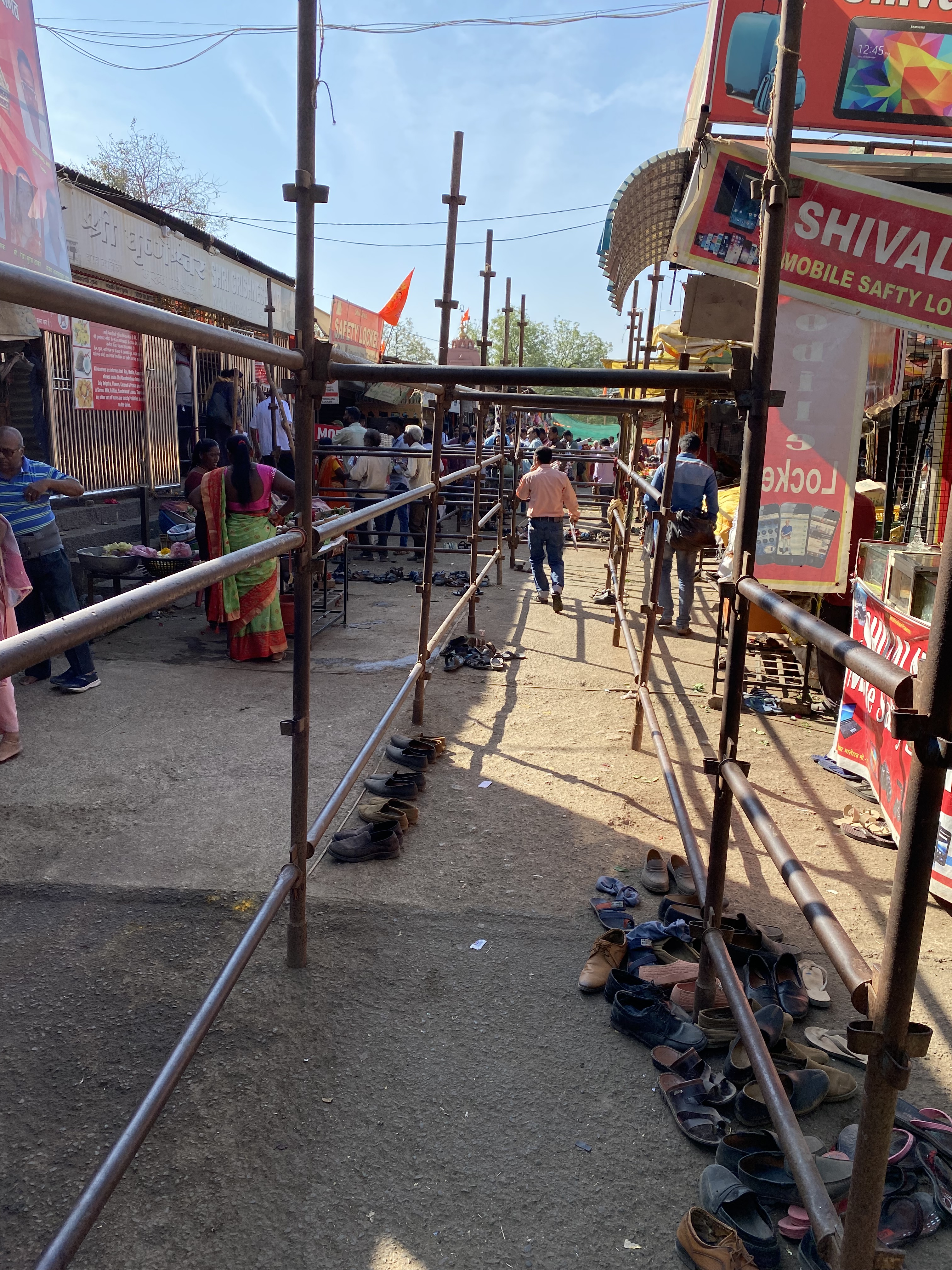

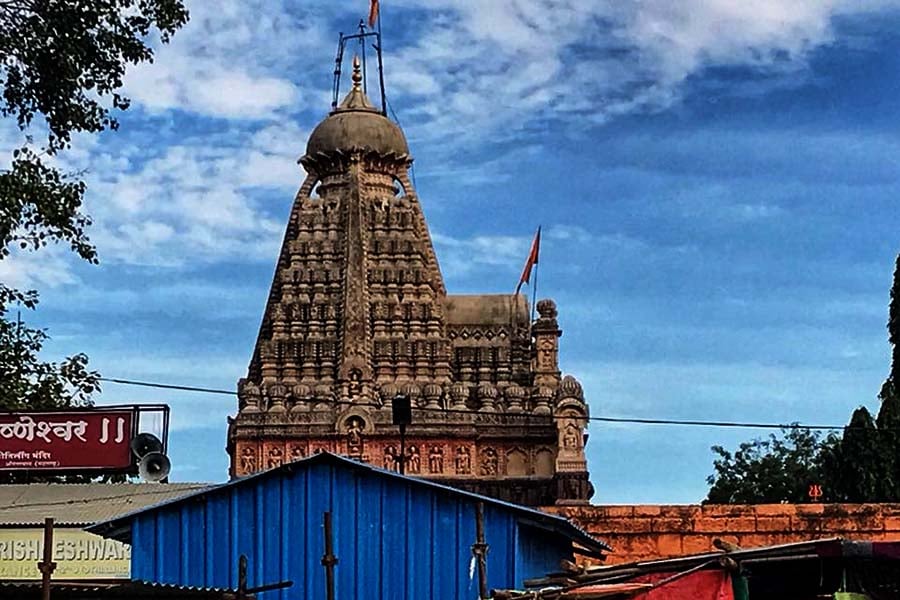
Mobile phones are strictly prohibited inside the temple and have to be deposited in shops providing ‘locker facility’ for a small fee, that takes care of the footwear too. As we entered the temple’s main gate, we saw rows after rows of railings to manage the queues. Surprisingly, the queue inside was sizeable, though not alarming. NO SPECIAL DARSHANS here. Everyone has to follow a single line. Another notable feature here is that men have to be bare-chested while entering the sanctum sanctorum, where one can touch the shivling with hands and head. The temple tower was under renovation and the picture shown above depicts how it looks in normal times. About an hour in the queue, and we had a good darshan. Minor irritants include men and eunuchs seeking alms inside the temple compound, when one is confined to the railed queue.
The legend behind Grishneshwar is that there was a childless couple, Brahmavetta Sudharm & Sudeha in Devgiri. Sudeha got her sister Ghushma, married to her husband with the advice that she should make lingas, worship them and then immerse them in the nearby lake. In due course, a baby boy was born to Ghushma but she continued her rituals. The boy grew into a man and one day, out of jealousy, Sudeha killed him and thew the body into the same lake. Ghushma continued with her rituals believing in Lord Shiva. One day, when she was immersing the linga, she saw her son walking towards her. Shiva appeared too and narrated what her sister had done. Ghushma pleaded that her sister be forgiven. Pleased, Shiva granted her a boon and Ghushma asked HIm to stay in this place as Grishneshwar –The Lord of Compassion. Though this temple is mentioned in the Puranas, it was destroyed by the Delhi Sultans in the 13th-14th century AD and rebuilt by the Marathas in the 16th century AD, only to be destroyed by the Mughals. Ahilyabai of Holkar built the current temple structure in the 18th century AD. Evidence of Islamic influence can be seen in the surrounding monuments in the picture.
A drive of 5 minutes and we were at Ellora. Apart from the differences between Ajanta and Ellora cited in Ajanta Ellora – Day 1, we came to know two other differences at the Ticket counter. Ellora is closed to the public on Tuesdays, unlike Ajanta, that is closed on Mondays. Secondly, while the entry ticket costs Rupees Forty for Indian citizens at both sites, Ellora issues plastic discs or tokens unlike Ajanta, where paper tickets are issued. Once you show the discs, you are allowed access with the remark that the disc should be kept safe and dropped at the box set for it, while exiting. There are 34 caves open to the public of which Caves 1-12 are Buddhist caves, 13-29 are Hindu caves & 30-34 are Jain caves, all spread over a distance of 2-3 kilometers at the ground level, save for the Jain caves that are at an elevation, as also a few Hindu caves. Battery-operated buggies can take you to the faraway caves for a fixed fee of Rupees Thirty. You will do well to remember that you cannot spend quality time visiting all 34 caves, neither it is necessary, since all caves are not equally appealing. Suggest you do some research on the main caves you would like to visit and spend a longer time admiring the carvings/sculptures. The most important cave is obviously Cave 16.
As we walked around the well-manicured lawn, we found ourselves right in front of Cave 16 – Kailasa Temple. Caves 17 to 30 to the right and 1-15 to the left in a sweeping arc.
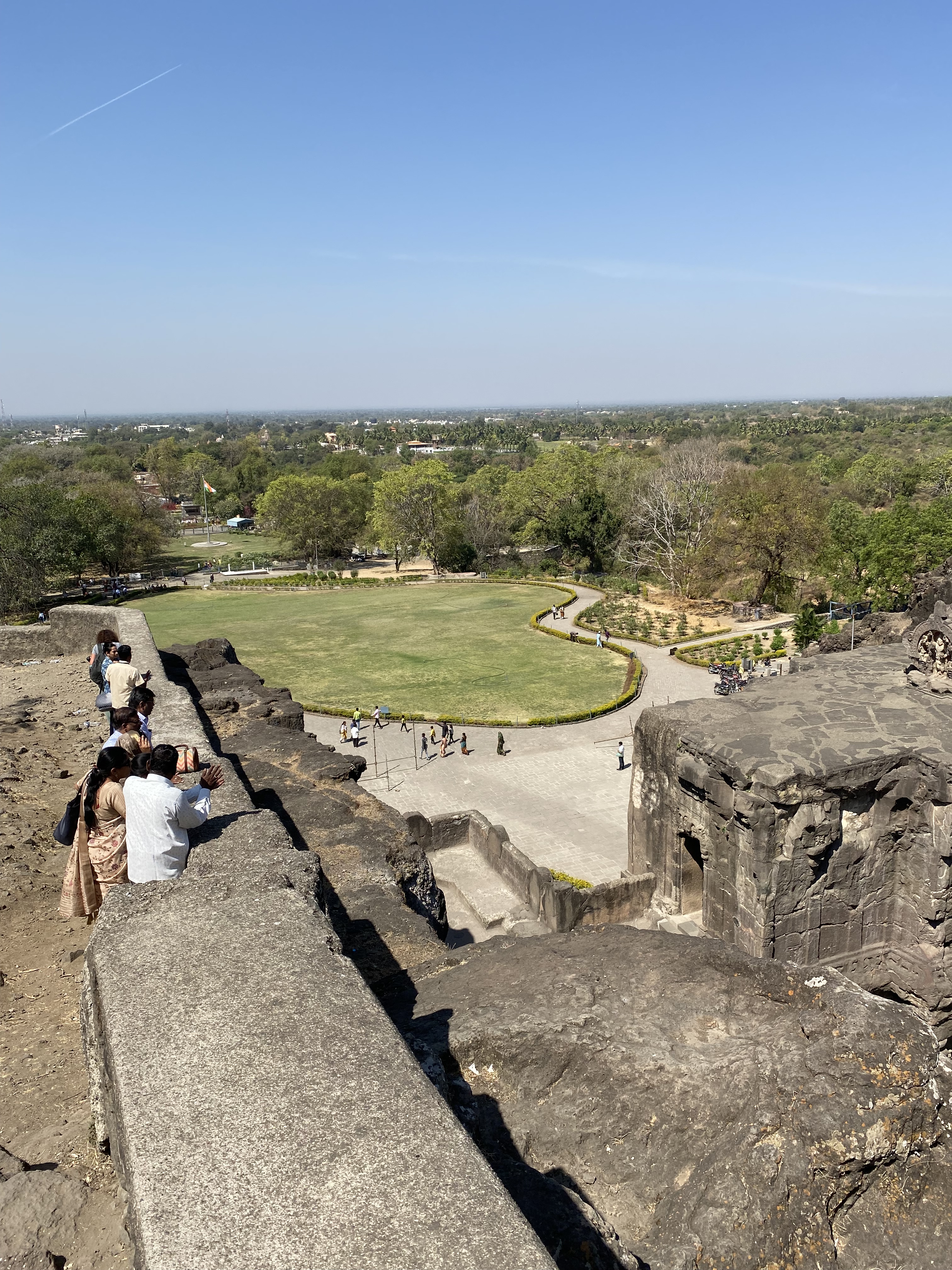
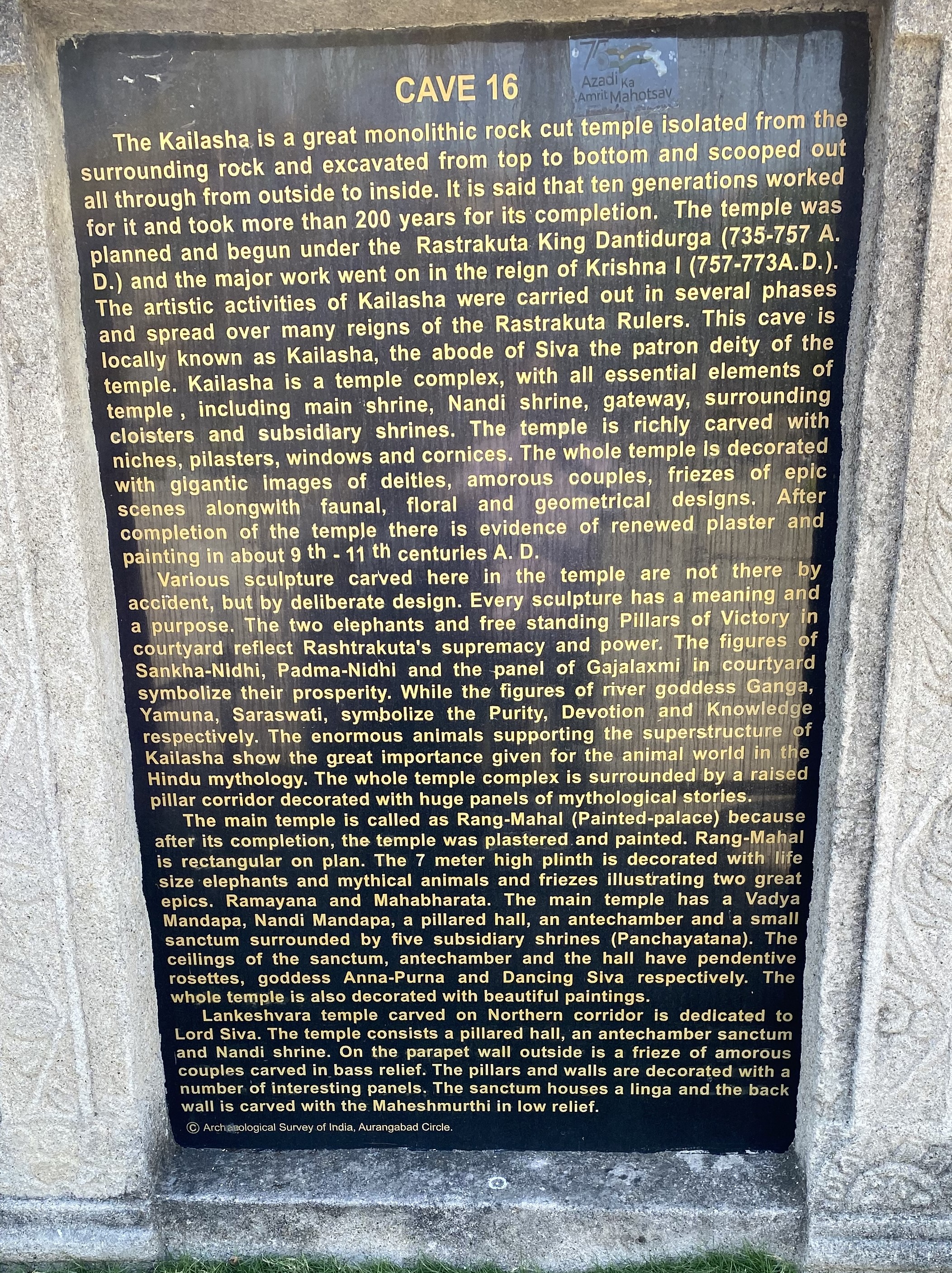
The first sight we see in the entrance arch are the statues f Ganga and Yamuna on either side. As we step into the courtyard, at the center we see the magnificent Gajalakshmi. To the left and right are two tall columns and then we see the giant elephant, with its trunk withered away by Time. There is the main twi0tiered temple at the center and running on three sides of the courtyard is an elevated, covered corridor.

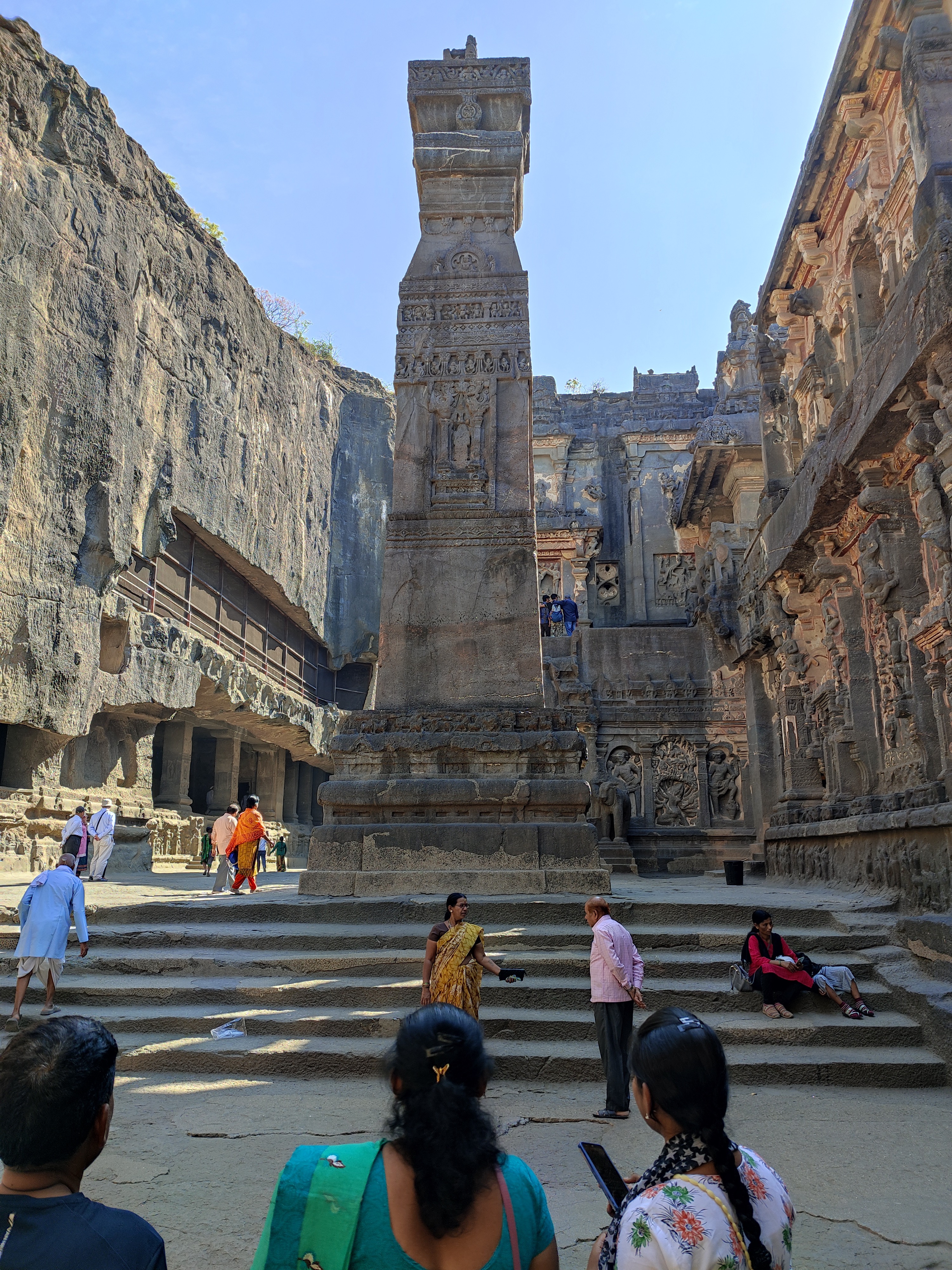


We climbed up to the first tier of the main temple block. Wow! What a sight! An exquisitely carved mandap, a mini-courtyard, the main temple hall and then the inner sanctum sanctorum. Admiring the carvings in the mandap, some of them amorous too, we walked across to the main hall after removing our footwear at the entrance. A defaced Nandi holds pride of place. The supervisor was kind enough to allow us to enter the inner sanctum ( normally not done) and touch the original stone Shivling – Kailasanatha.
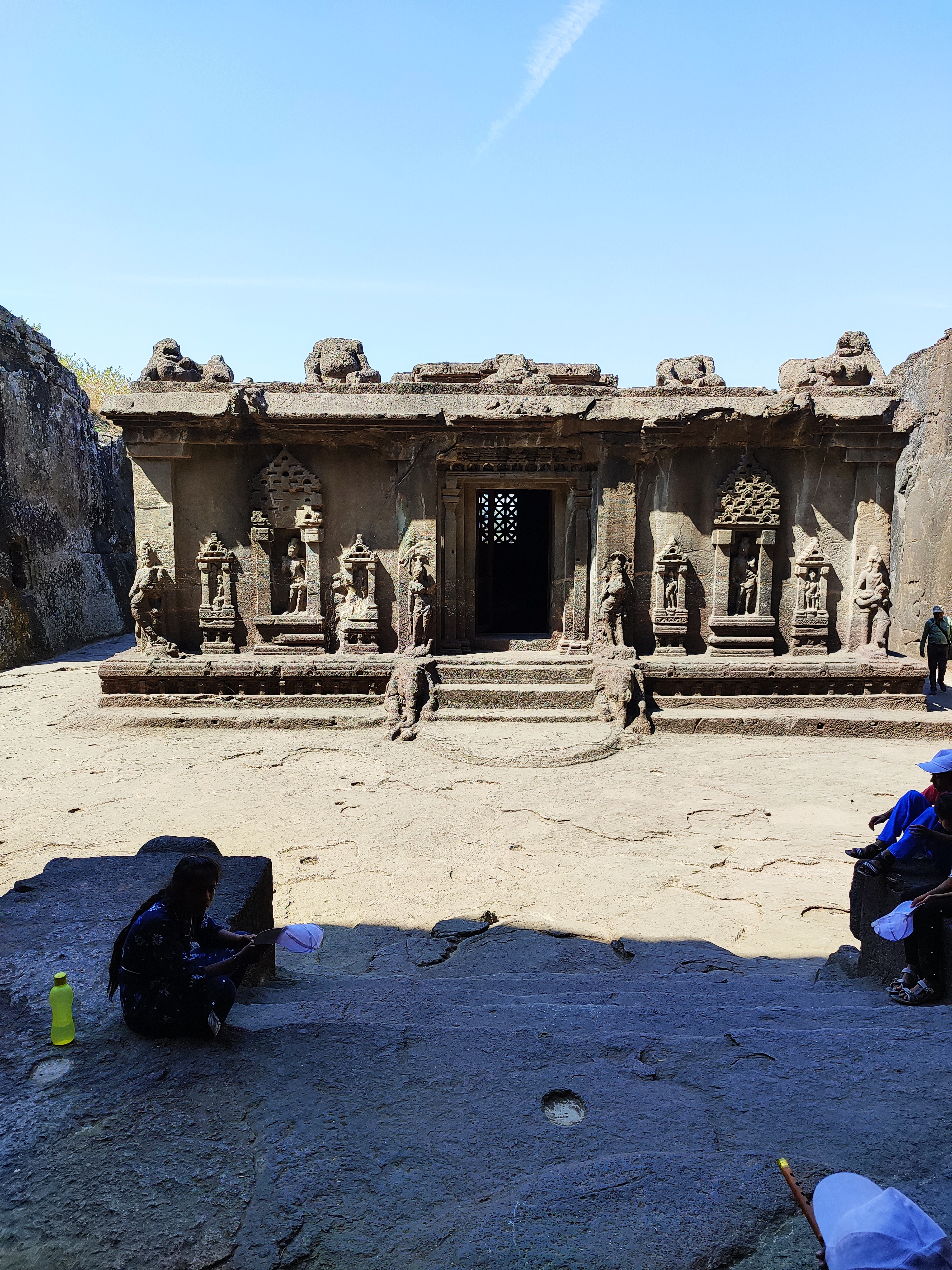
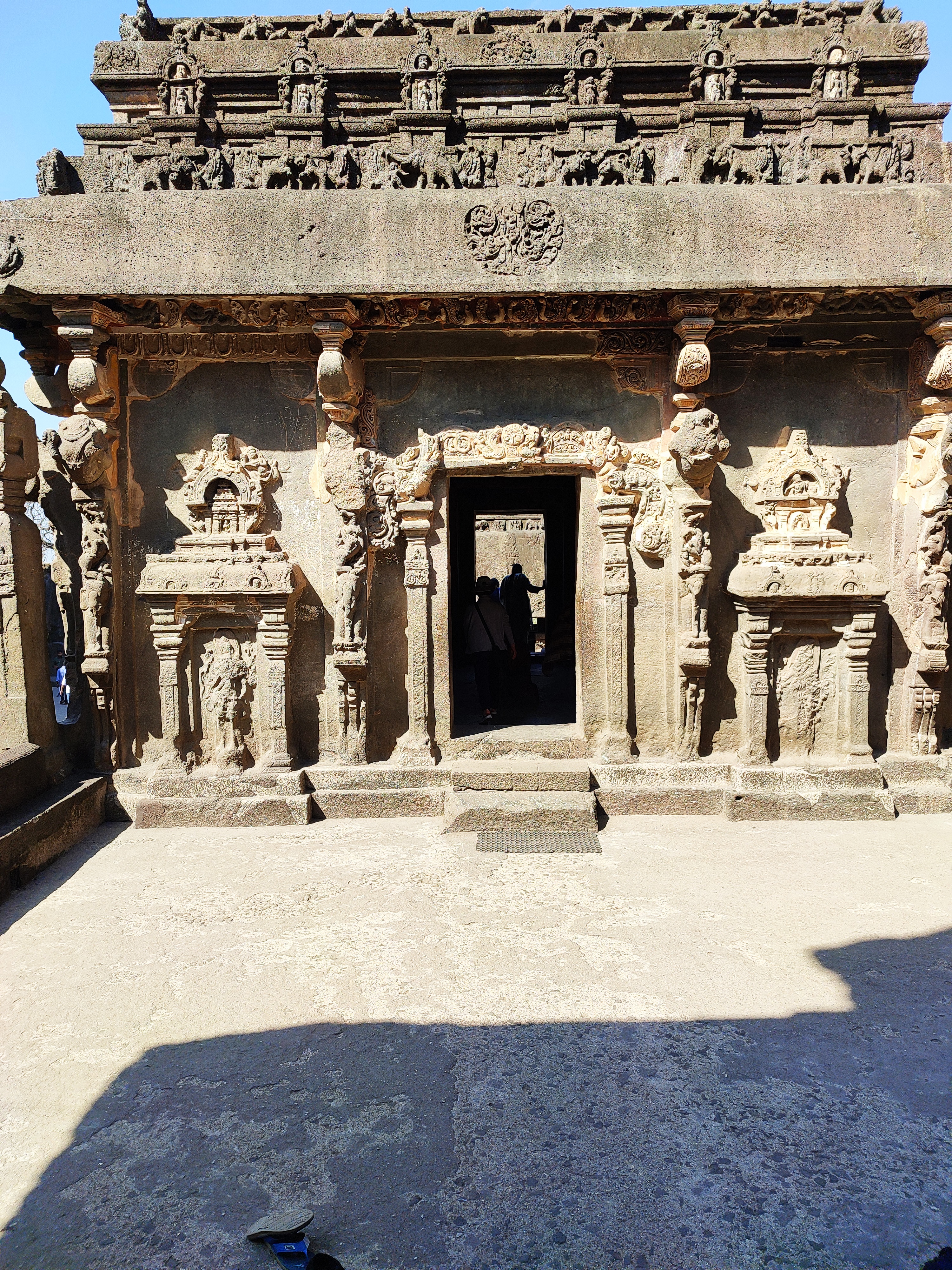



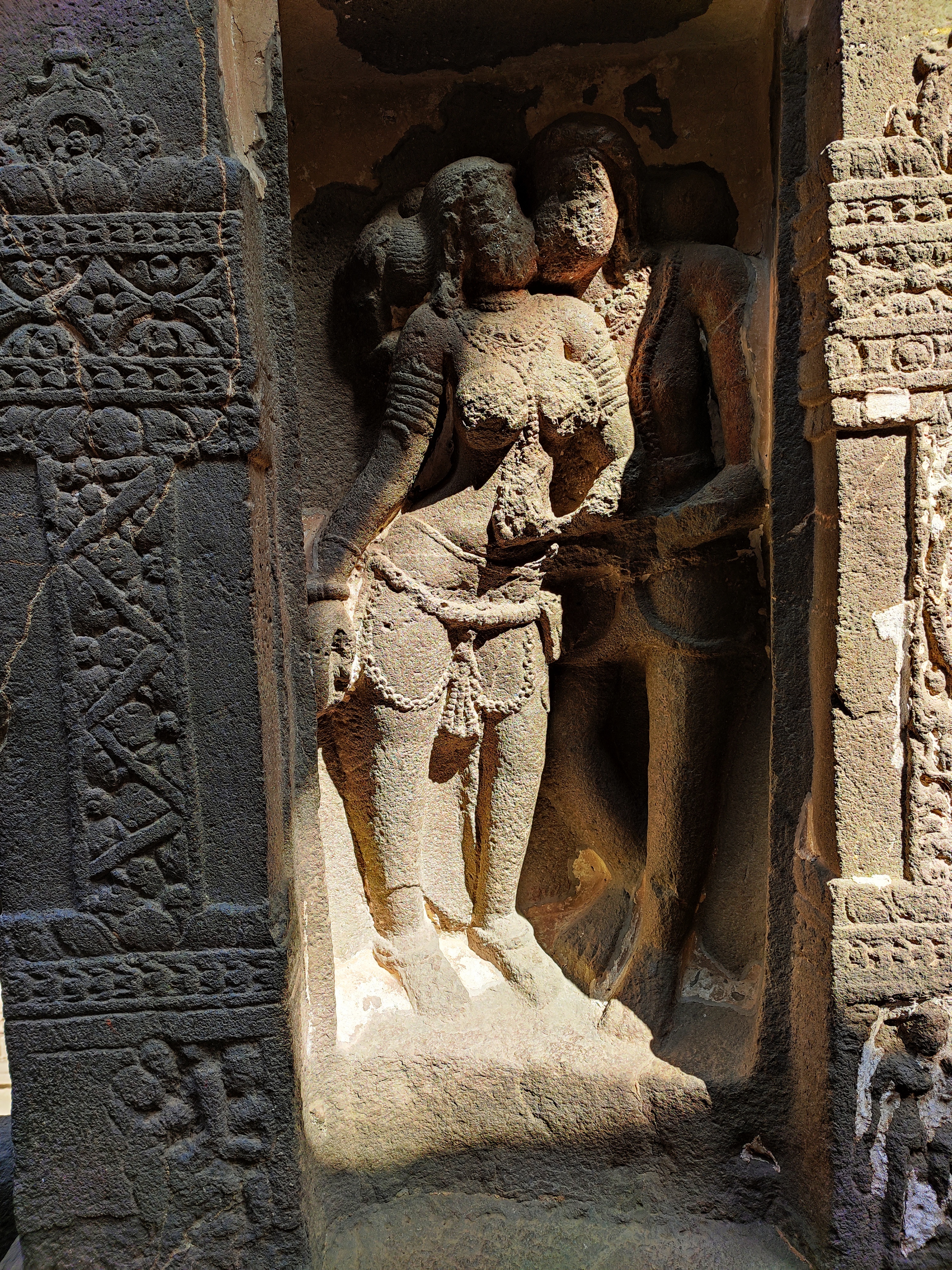

Coming down the steep steps , we now looked at walking through the enclosed corridor on the sides of the courtyard. A few steps above ground level, and the corridor is a literal museum, with carvings and sculptures depicting scenes from ancient epics, including the Dashavatar. Yes, the Dashavatar in a Shiva Temple, goes to show the kind of respect for cultural practices different from theirs.

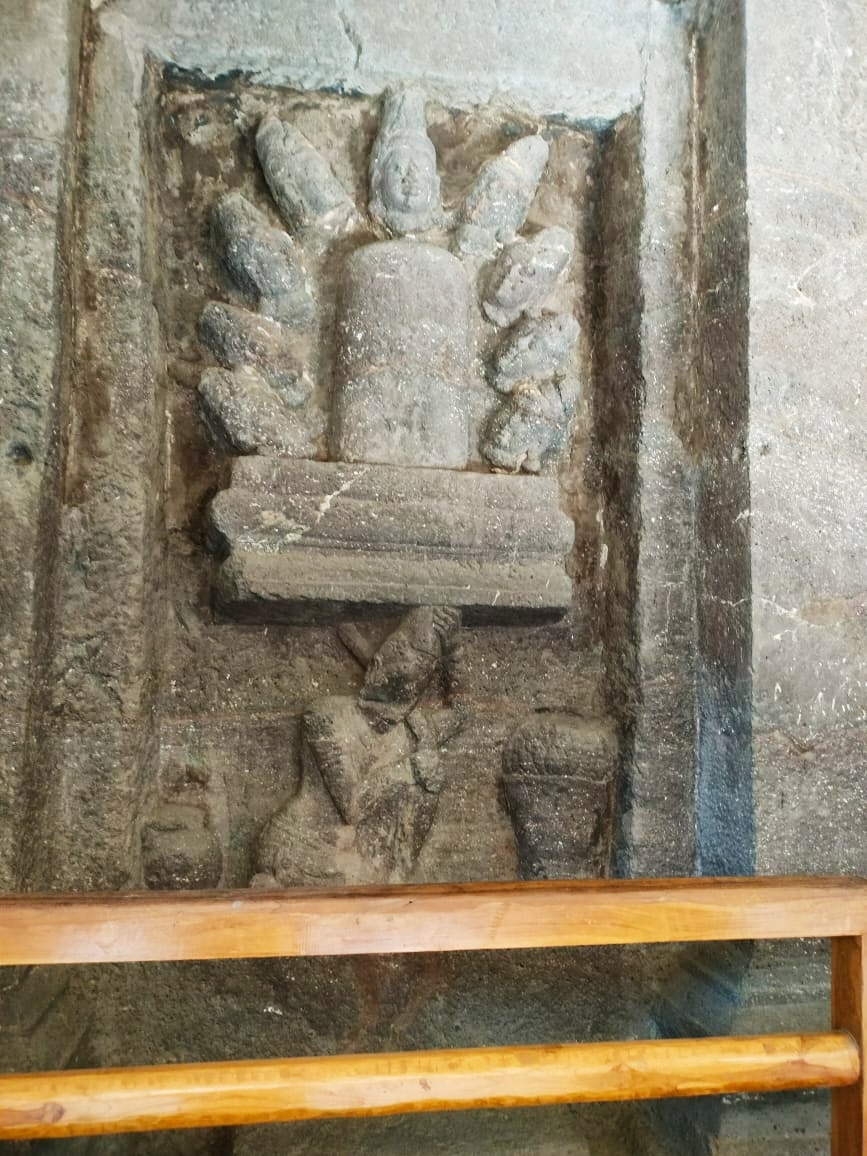
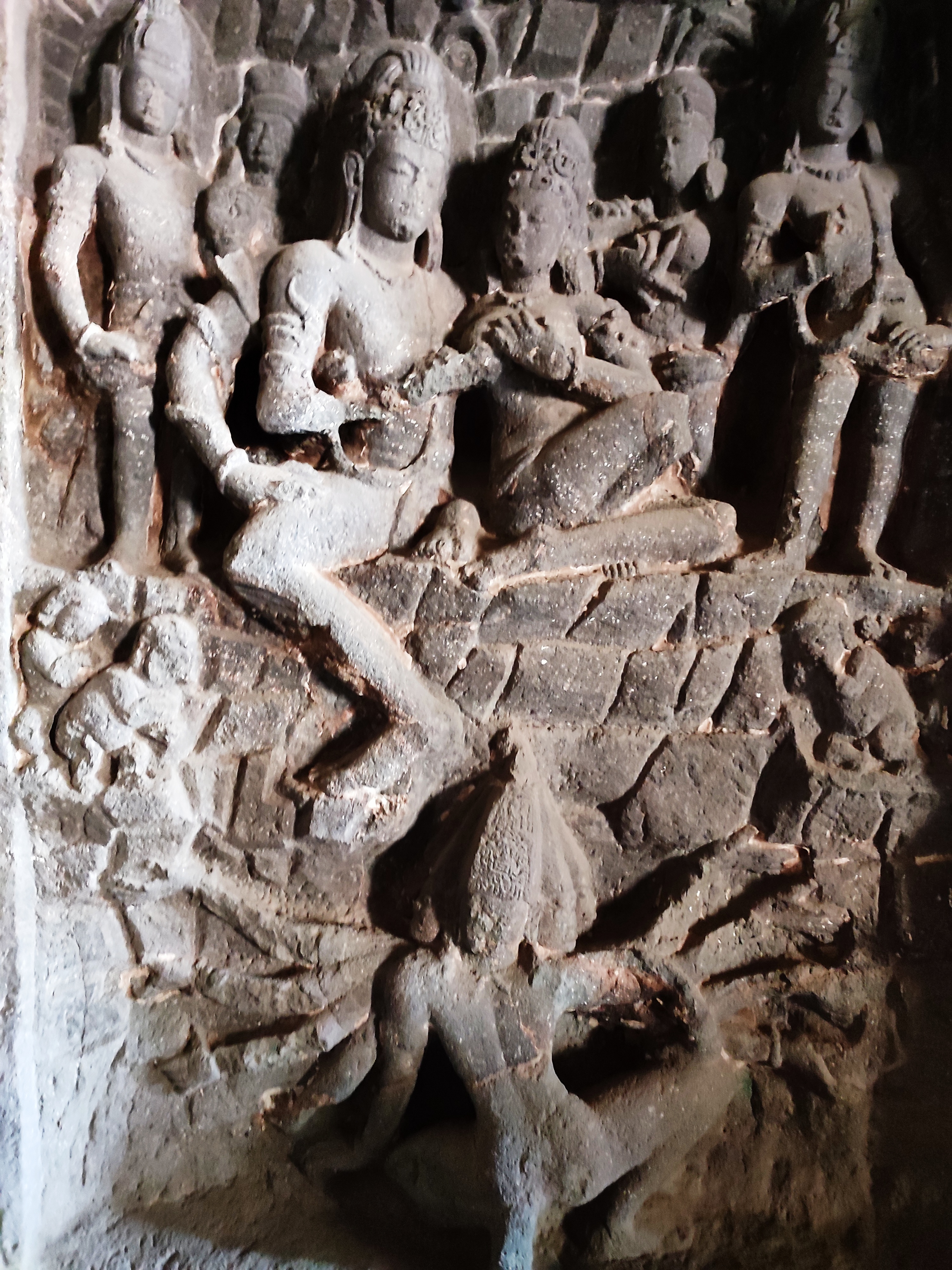



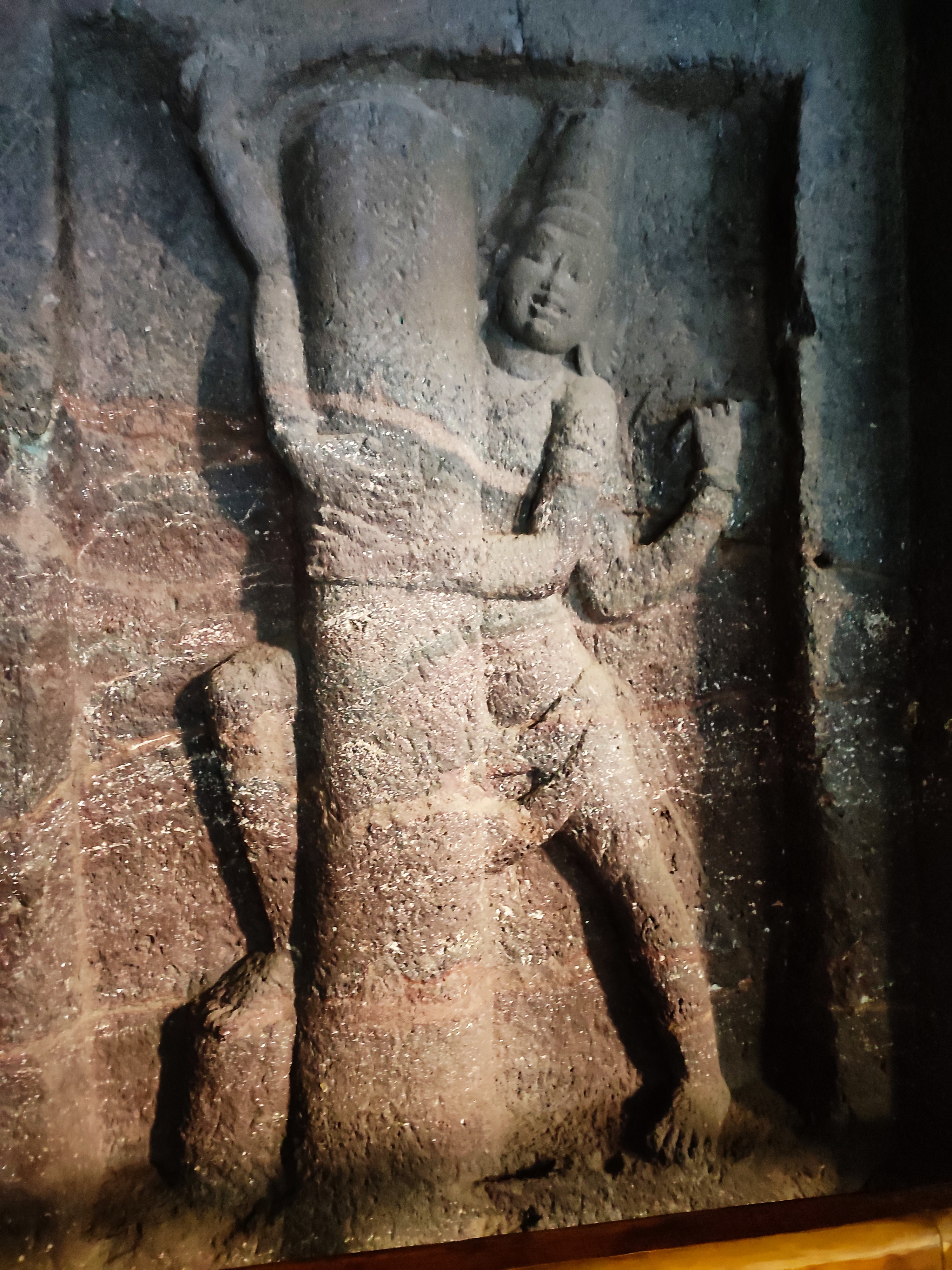
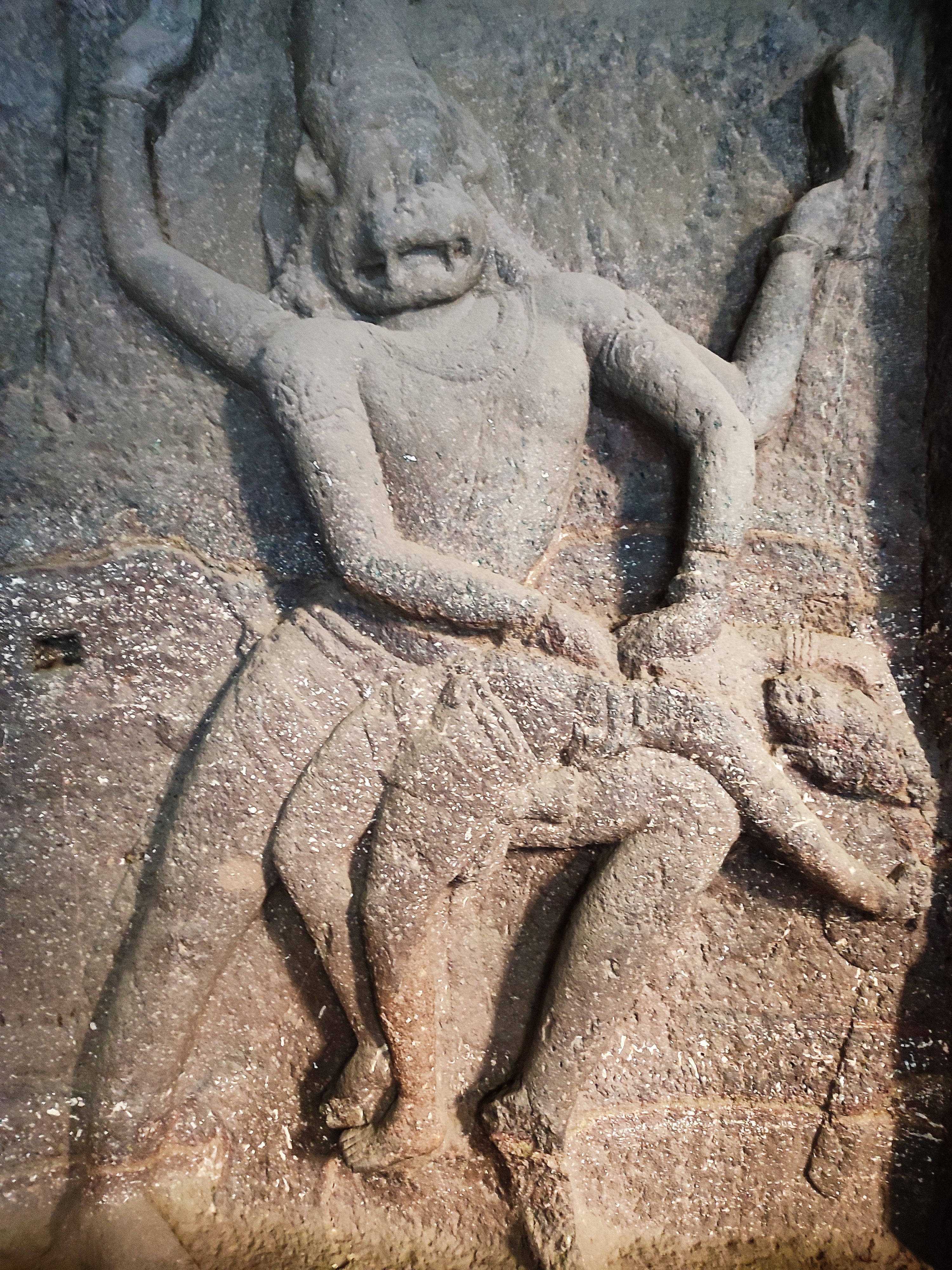
The sun was high up in the sky. We were sweating by the exertion and the excitement, thirsty too. So, after a good two hours, we decided, albeit reluctantly to step out of the Kailasa Temple. The visit to Ellora would not be complete without having a bird’s eye-view of top-down view of Kailasa. The place is called 16B with roughly-hewn steps on the hillside and from top, you look down at the marvels of Kailasa.


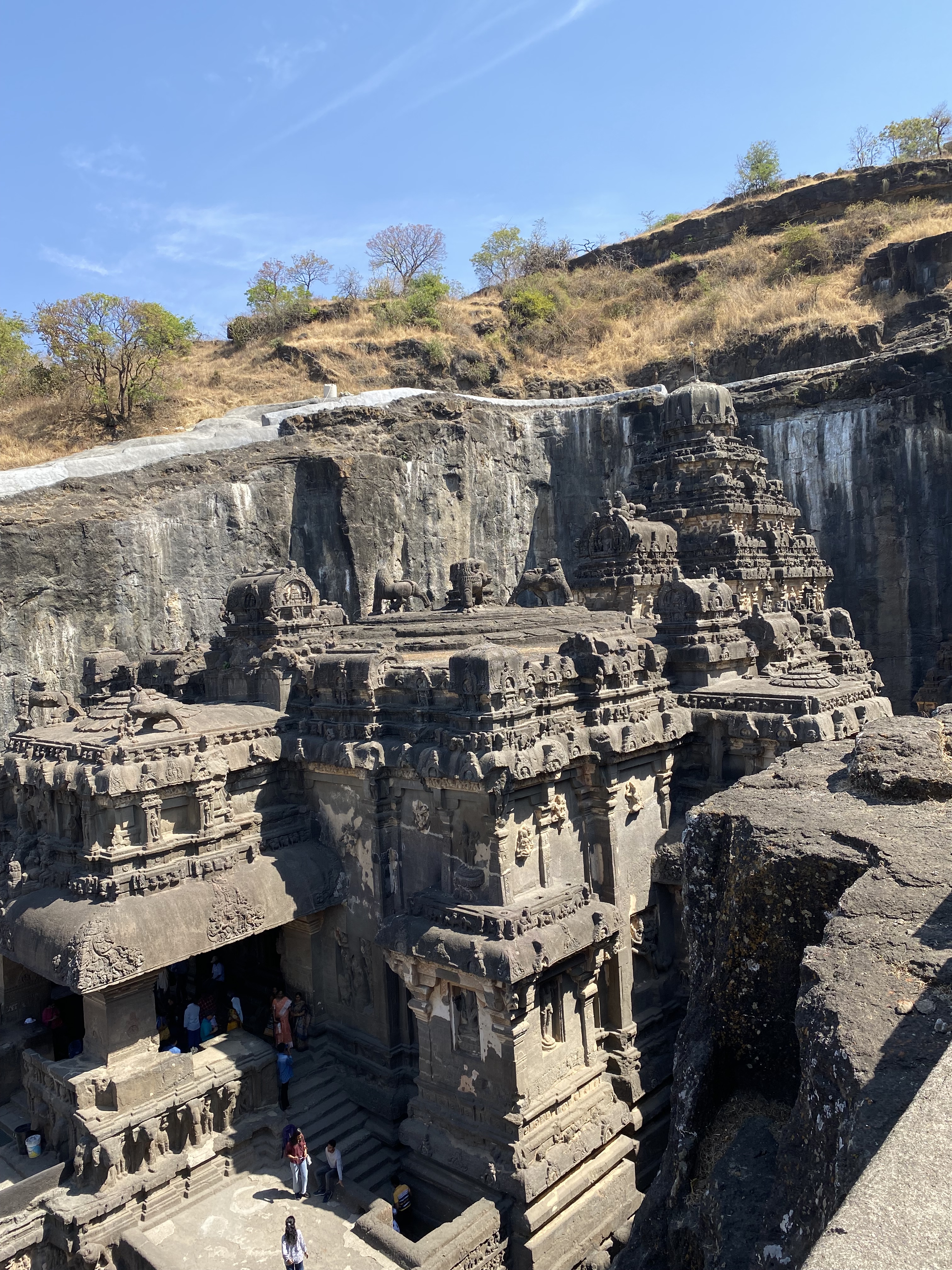


Visited a few other caves too, but after Kailasa, they paled into insignificance. Time for us to leave. Waled across to the shaded point near the entrance where cold drinking water is made available, though the cafeteria is not yet functional. A clean toilet-block provides visitors a smooth bio-break.
As we dropped our discs at the exit, our hearts were full from this awesome Ellora experience.
Discover more from BalasBroadcast
Subscribe to get the latest posts sent to your email.
Pingback: Mini Ellora - BalasBroadcast